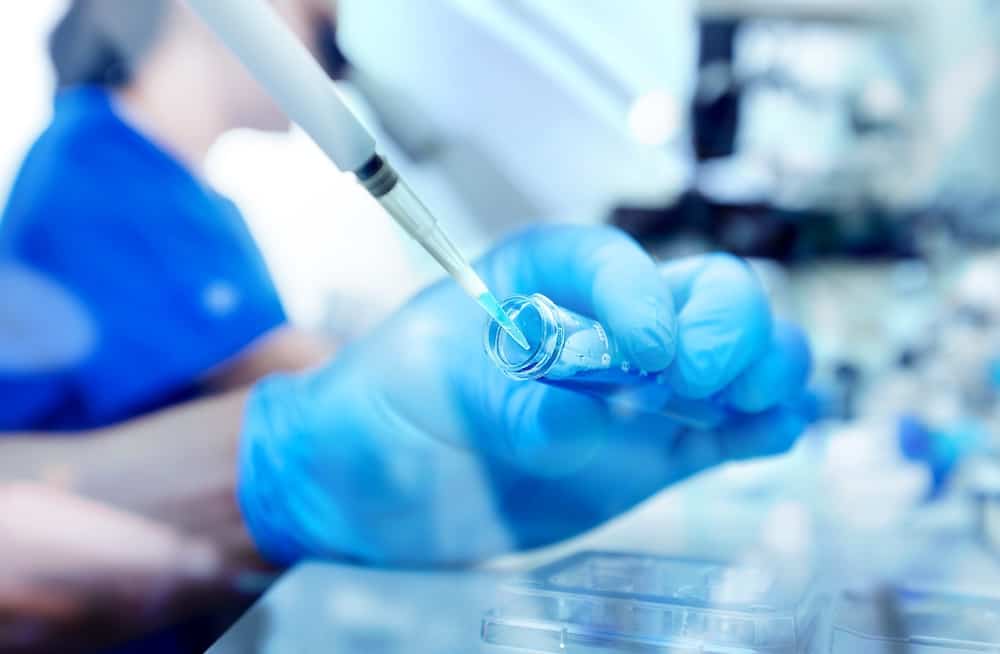As part of an in-vitro fertilization (IVF) treatment, you will undergo an embryo transfer. The process involves transferring a fertilized egg into a woman’s uterus with the hope that it will implant and lead to a successful pregnancy. After an embryo transfer, there can be many different symptoms. It can also be a very emotional time for hopeful couples. In this article, you’ll find out what to expect and what happens after the embryo transfer.
Day of the Embryo Transfer
When it comes to the day of the embryo transfer, you can expect the procedure to be relatively straightforward. It doesn’t typically require any sedation or anesthesia. Your fertility doctor will discuss with you the quality and quantity of embryos produced and outline exactly what the procedure involves.
Physicians use a tool called “embryo grading” that helps to determine when to transfer and which embryos to transfer. The goal is to limit the number of embryos transferred because they can result in multiple births. Typically, transfers consist of one embryo (at Day 5 of development, known as “Blastocyst stage”), but there can be more, depending on what has been discussed previously and the specific circumstances. For example, lower quality embryos may entice your physician to compensate for the lower quality by transferring more than one embryo at a time.
How Long Does an Embryo Transfer Take?
An embryo transfer is a short procedure that is similar to a pap smear. The entire procedure takes between 15 and 30 minutes. The doctor will insert a speculum into the vagina and use a thin, long catheter that contains the embryos to insert them into the womb, passing through the cervix into the uterus. A bit of fluid is included in the catheter for easy transfer of the embryos.
Once the embryos are inserted, the patient is provided time to rest if needed. Since the procedure isn’t considered highly invasive, taking that much time might not be necessary and post embryo transfer rest can be as little as 30 minutes but is adjusted to a patient’s comfort level. All-in-all, the procedure from start to finish, including set up, rest time, and transportation, can be between two and four hours.
Tips After Embryo Transfer to Improve Chance
A few things can be done to optimize the chances of a successful embryo transfer.
Eating a healthy diet full of antioxidant-rich whole foods, healthy fats, and whole grains can help boost fertility.
Maintaining a healthy body weight and taking the proper supplements can also help boost fertility. Discuss with your doctor the best supplements to take during fertility treatments.
Acupuncture can be a helpful tool to use during a fertility journey. Needling can help reduce stress and contractility of the uterus and improve the lining’s blood flow.
Overall, leading a healthy lifestyle is ideal when trying to conceive. Reduce stress, stay hydrated, include electrolytes, reduce caffeine, exercise regularly, and get plenty of rest. Prioritizing mental health and the mind-body connection is critical throughout this process.
What Happens to the Embryos After Transfer
Once the transfer is complete, it can take around 9 to 14 days to detect pregnancy. The 14 days after the transfer is considered the two-week wait, where it’s recommended that patients don’t test for pregnancy before the full two weeks have passed.
Here’s what happens after an embryo transfer day by day:
- Day 1 and 2: The blastocyst hatches out of its shell and begins to try to attach itself to the uterus.
- Day 3: Implantation begins as the blastocyst moves deeper into the uterine lining.
- Day 4 and 5: Implantation continues and becomes complete. The cells that will be the placenta and fetus begin to develop.
- Day 6: The hCG hormone is starting to be produced.
- Day 7 and 8: Development continues, and more hCG is secreted into the bloodstream.
- Day 9: hCG levels may be high enough to detect pregnancy.
Common Symptoms After Frozen Embryo Transfer
Although an embryo transfer can be a routine procedure, and you may not feel like a lot of downtime is required, it’s expected to have some symptoms afterward. It’s essential to take all the time you need. Here are some of the most common symptoms following an embryo transfer. If any of the following symptoms become severe, please seek immediate medical attention.
Cramping After Frozen Embryo Transfer
Cramping after an embryo transfer can be a positive sign that the transfer was successful, but it can also mean menstruation could happen soon. Medications taken during IVF can also cause cramping, making it a common symptom. Furthermore, some women are sensitive and can experience cramping after any kind of pelvic procedure.
Bloating After Frozen Embryo Transfer
IVF medications increase the level of progesterone in the body, which can lead to bloating. It can be a positive sign of pregnancy due to the influx of hormones, but many other causes can result in bloating as well.
Sore Breasts After Frozen Embryo Transfer
Having sore breasts can be an early indication of pregnancy but can also result from the fertility medication taken during the two-week wait. Progesterone can cause swollen, sore, tender, and soft breasts, making it a common symptom after an embryo transfer.
Tiredness After Embryo Transfer
Many women feel fatigued and tired post-embryo transfer, especially during the first seven days after the transfer. Fatigue and exhaustion can be usual symptoms of pregnancy, but the surge in progesterone can cause patients to feel sleepier and dizzier than normal.
Changes in Discharge After Embryo Transfer
During the first seven days after an embryo transfer, it’s possible to see a change in discharge, depending on the prescription medication given. Any kind of gel, vaginal suppositories, or tablets may cause burning, discharge, yeast infections, or itching. A positive embryo transfer can also alter vaginal discharge.
Frequent Urination After Embryo Transfer
Feeling the urge to visit the bathroom more frequently can be an early sign of pregnancy and a rise in progesterone and hCG hormones. With a successful embryo transfer leading to a pregnancy, there will be additional blood in the body, resulting in more frequent urination.
It’s important to know the difference between an increased need to urinate and a urinary tract infection, which can have additional symptoms like fever, bleeding, increased urgency, nausea, vomiting, and pain.
Missed Period After Embryo Transfer
If you have a regular menstrual cycle, a missed period can be a positive sign for pregnancy after an embryo transfer.
7 Days After Embryo Transfer Symptoms
Below, we outline the common symptoms many women experience seven days after an embryo transfer. If you’re experiencing these, it may be a positive sign that the transfer worked.
Spotting 7 Days After Embryo Transfer
Spotting is a prevalent symptom after an embryo transfer and can be an indicator of pregnancy. Implantation bleeding is typical for natural and IVF pregnancy, where the embryo has been implanted onto the lining of the uterus. While spotting and bleeding can cause negative emotions and stress, it can be an excellent sign for hopeful parents.
Lower Back Pain 7 Days After Embryo Transfer
Much like many women experience during their menstrual cycles, lower back pain can be a common symptom seven days after an embryo transfer. The hormones, ovarian stimulation, and endometrial preparation can cause cramping and lower back pain. Dizziness, pain, and pins and needles are also fairly common symptoms.
No Symptoms After Embryo Transfer: Is That Normal?
10% to 15% of patients experience no symptoms at all after an embryo transfer, even with the excess progesterone and estrogen in the body. It’s very common not to have any symptoms at all or very mild symptoms.
Day 14 After Embryo Transfer
After the two-week wait, hCG levels should be sufficient enough to detect pregnancy, and levels over 200 mIU/ml are likely to be successful pregnancies. Levels over 600 mlU/ml could suggest multiple pregnancies.
IVF Pregnancy Test
The pregnancy test, also known as a “Beta test”, is taken after 14 days to confirm the pregnancy’s presence with certainty. It is done via a blood test where the HcG levels are measured. With so many emotions surrounding IVF treatments, such as stress, anxiety, excitement, and hopefulness, it can be very tempting to take a pregnancy test shortly after an embryo transfer. It’s important to wait two full weeks before testing for the most accurate results. Testing before 14 days may lead to false results, as so many hormone surges and drops are happening in the body. For the best results, book an appointment with your fertility doctor for the first test.
FAQs
Is it possible for two embryos to successfully flourish in one uterus after IVF?
Many of us have heard of fertility treatments leading to multiple births. Many hopeful parents wonder if transferring multiple embryos could result in better chances for a successful pregnancy. In most cases, fertility doctors will only transfer one embryo at a time, but depending on the circumstances, two may be a viable option and have a better likelihood of pregnancy. Two embryos can implant and flourish in one uterus.
Do frozen embryos take longer to implant?
Both fresh and frozen embryos have a similar creation process,so there is no difference in terms of time to implant. The point in time where an embryo is transferred to the uterus, whether they were created “fresh” or “frozen previously and then thawed” is the same. A frozen embryo was frozen on Day 5 of development and when thawed, is at the same “Age” as a fresh one on Day 5. Using frozen embryos offers more convenience to a patient especially when her endometrial lining struggles to reach the optimal level for an embryo transfer. The fact the embryos are frozen allows the intended mother to wait until her lining is perfect and then thaw the frozen embryos and proceed with a transfer. However, financially speaking, it can be more costly to freeze embryos, so some people opt for fresh transfer if all else is equal. Those at risk for OHSS should not opt for a fresh transfer. In terms of implantation time, there is no difference between using a fresh embryo or a frozen one (which is thawed)
How long does it take for an embryo to implant after transfer?
In one to two days after the transfer, the blastocysts begin to implant in the uterus and will finish around day nine of the process.
What food is good after an embryo transfer?
Maintaining a healthy diet throughout fertility treatments is always helpful for ensuring you’re in good health. Staying calm and relaxed is more significant than diet. However, some great additions to your meals include:
- Vitamin and mineral-rich foods
- Omega-3’s
- Magnesium
- Zinc
- Cruciferous vegetables
- Vitamin B6
- Water
Is bed rest necessary after an embryo transfer?
Bed rest is not necessary after an embryo transfer, but resting when you feel you need to is fine. Inactivity and bedrest may actually harm your health, as they may lead to increased blood clots and reduce blood flow to the uterus. Light activity can improve blood flow and reduce inflammation.
However, it would be best if you avoided the following:
- Vigorous workouts
- Intercourse
- Hot baths, sunbathing, or spending time in hot weather.
Please discuss your everyday routine with your medical team to determine if any changes need to be made, as you should keep your regular routine after an embryo transfer.
If you’re ready to begin your fertility journey, ELITE IVF is here to help. We will be with you every step of the way, helping you make the best decision for your family. Contact us today for more information.


